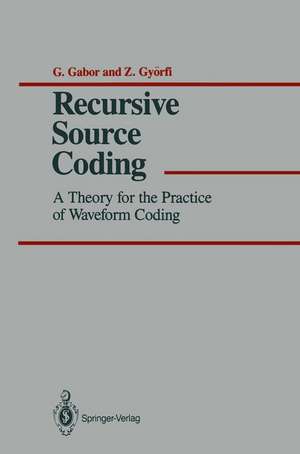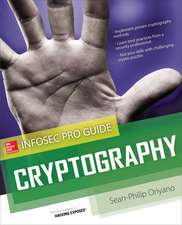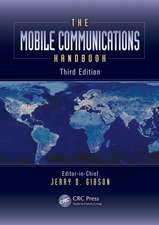Recursive Source Coding: A Theory for the Practice of Waveform Coding
Autor G. Gabor, Z. Györfien Limba Engleză Paperback – 11 noi 2011
Preț: 631.40 lei
Preț vechi: 742.82 lei
-15% Nou
Puncte Express: 947
Preț estimativ în valută:
120.83€ • 124.66$ • 102.27£
120.83€ • 124.66$ • 102.27£
Carte tipărită la comandă
Livrare economică 04-18 martie
Preluare comenzi: 021 569.72.76
Specificații
ISBN-13: 9781461386513
ISBN-10: 1461386519
Pagini: 112
Ilustrații: 102 p.
Dimensiuni: 155 x 235 x 6 mm
Greutate: 0.17 kg
Ediția:Softcover reprint of the original 1st ed. 1986
Editura: Springer
Colecția Springer
Locul publicării:New York, NY, United States
ISBN-10: 1461386519
Pagini: 112
Ilustrații: 102 p.
Dimensiuni: 155 x 235 x 6 mm
Greutate: 0.17 kg
Ediția:Softcover reprint of the original 1st ed. 1986
Editura: Springer
Colecția Springer
Locul publicării:New York, NY, United States
Public țintă
ResearchCuprins
1 The Fine-McMillan Recursive Quantizer Model.- 1.1 Source, Channel, Reproduction.- 1.2 The Linear Deltamodulator.- 1.3 The Definition of a Fine-McMillan Recursive Quantizer.- 1.4 The Design Problem.- 1.5 The Simple Quantizer.- 1.6 Theoretical Limits with Given Channel Capacity.- 2 Structural and Design Problems of a Recursive Quantizer.- 2.1 The McMillan Structure Problem.- 2.2 Fine’s Principle of Minimum Search.- 2.3 The Principle of Minimum Search and the Property of Equimemory.- 2.4 Optimality and the EM Property—the McMillan Structure Theorem.- 2.5 Strong-optimality, MS and EM Properties—the Reformulation of the McMillan Structure Theorem.- 2.6 The Proof of the Structure Theorem.- 2.7 Feed-forward Design for the Causal Case.- 2.8 Trellis Coders in Delayed Recursive Quantizers.- 3 Differential Predictive Quantizers.- 3.1 Additive Decoding.- 3.2 Additive Decoding, MS and EM Properties—the Definition of the Differential Predictive Quantizer.- 3.3 A Misunderstanding Concerning the Predictor.- 3.4 Additive Decoding and the Feed-forward Principle.- 4 Design Examples—Speech Compression.- 4.1 The Stationary Model of Speech.- 4.2 The Design of a DPC.- 4.3 The Design of a Fine-McMillan Type RQ.- References.- Appendix 1.- Appendix 2.- Appendix 3.














